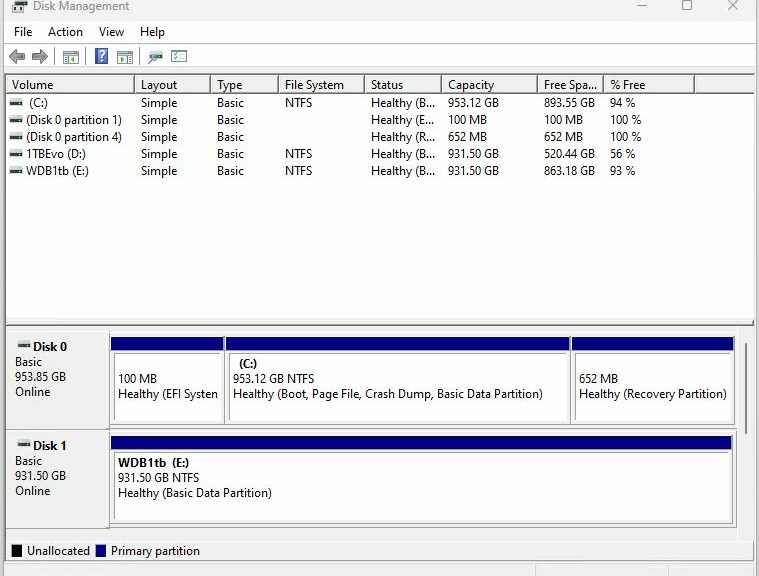Sometimes, I just don’t get it when Windows gets weird. This time, it’s one of my two Lenovo ThinkPad X380 Yoga laptops (i7-8650U, 16 GB RAM, 1 TB NVMe SSD; vintage 2018). I noticed my USB-C attached NVMe enclosure was MIA, Plugging and unplugging did no good, either. The drive worked fine in another, newer laptop (Lenovo ThinkPad P16 Mobile Workstation: 11th gen i7, 128GB RAM, 2×1 TB NVMe SSD). I soon figured out that a reboot cures MIA USB-C port on the X380. Bizarre!
Hold on: A Reboot Cures MIA USB-C Port
Because the drive worked right away in the other laptop, I was pretty sure the issue was with the USB-C port, not the drive. And indeed, when I rebooted the X380 Yoga the USB-C-attached NVMe enclosure once again showed up and worked at expected speeds (it only ran about half that rate when plugged into a USB 3.2 Type A port via conversion cable).
What the hey? I’m speculating, but my best guess is that when the X380 goes to sleep it loses track of — and connection with — the USB-C port. Works fine now, though… The lead-in graphic shows this as the E: drive with a 1TB SSD ensconced therein.
When in Doubt … Reboot
It never fails to amaze and amuse me that the old “three-fingered salute” (anybody else still remember CTRL-ALT-DEL?) still fixes so many Windows weirdnesses. At least, it’s just something momentary. To no surprise, the search string “X380 Yoga USB-C port disappears after sleep” auto-completes when I start typing the word “disappears.” That tells me my experience is not unique: Google knows about it, too. Go figure!
And that’s the way things go here in Windows-World. Hopefully, I’ll remember what to do the next time this happens…
Added 2Hrs Later: Confirmed!
I let the X380 go to sleep and when I woke it back up, once again the USB-C NVMe drive disappeared. After another reboot, it’s baaaack! I’d have to say this confirms my sleep-based hypothesis. OK, then…

Thank you for this useful post! I had a similar issue with my USB-C port not being detected, and rebooting my system as suggested helped resolve the problem. Your insights are greatly appreciated!
In my more recent experience, this happens mostly on Intel-based laptops and desktops built or manufactured between 2016 and 2020. I’m curious to know if that describes the system for which you found my tip helpful. Thanks for your feedback. =Ed=
Rebooting my device was a simple yet effective solution for my USB-C port issues. This blog provided clear and practical advice that really helped me out. Thanks for the useful tips
Glad you found it useful. Sometimes, the old tricks — I’m thinking “3-fingered salute” aka CTRL-ALT-DEL — remain useful if in an altered form. Cheers! -e-
Discovering that a simple reboot can revive a dormant USB-C port was a game-changer for me. This tip saved me a lot of time troubleshooting, and I’m grateful for the straightforward advice provided here. Thanks for sharing such practical solutions!
This post was really helpful in resolving my missing USB-C port issue! The reboot tip worked perfectly and saved me a lot of time. Thanks for sharing such practical advice!